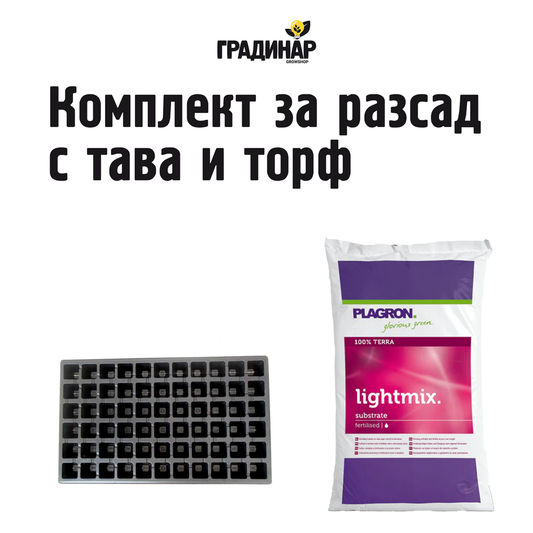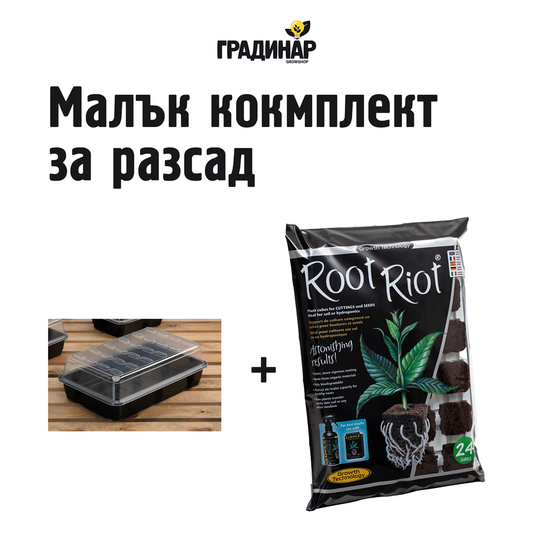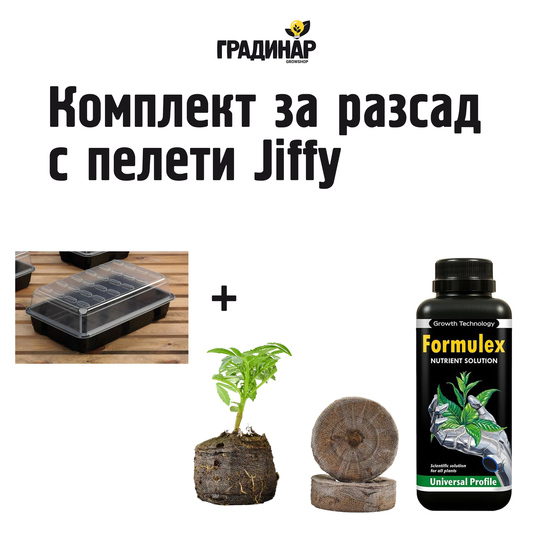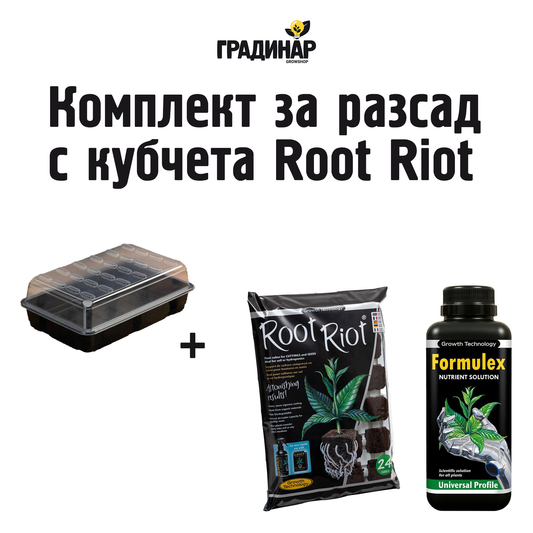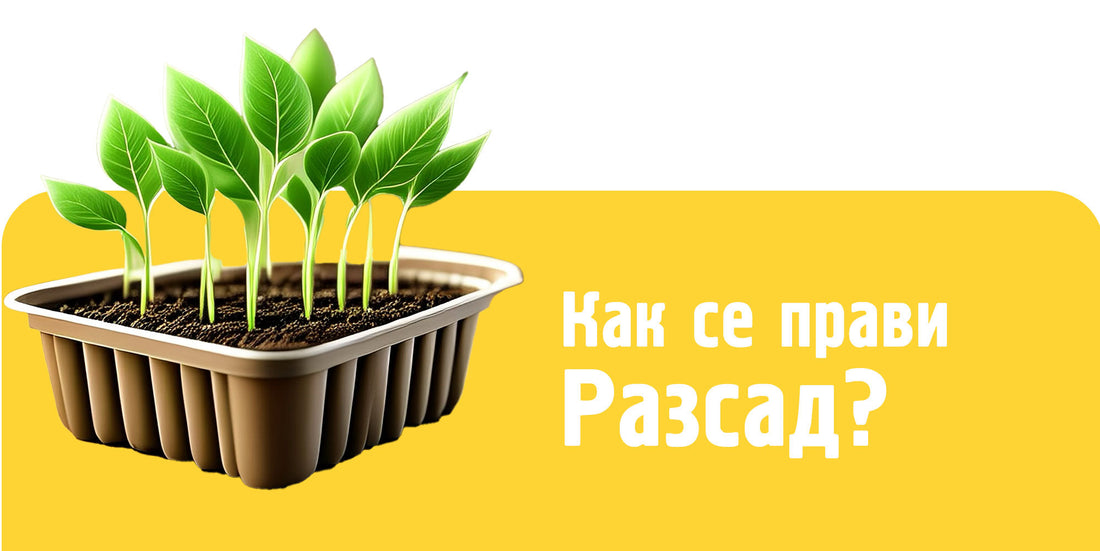
How to make seedlings?
To ensure 100% success in germinating seeds, it is important to follow the correct process and use the right products. In this article, we will look at the different types of substrates suitable for seedlings, the types of techniques and processes, and list everything you need with convenient links to the products.
Choosing the right substrate is key to successful seedlings!
- The good substrate: retains water, provides aeration and is sterile, preventing diseases.
- Main types of ingredients: Peat, perlite, vermiculite, compost, coconut, rock wool.
- Ideal characteristics: pH 5.5-6.5, 50-60% water retention, 10-30% porosity.
What are seedling substrates?
Seedling media are special mixtures designed to aid seed germination and the initial growth of young plants. They are lighter, more porous, and sterile than regular soil, making them perfect for starting seedlings.
To use them effectively, we need to understand their structure and basic qualities.
| Substrate characteristics | Why is it important? | Examples of good substrates |
|---|---|---|
| Moisture retention | Retains moisture for germination, but does not waterlog | ✅ Coconut fiber ✅ Vermiculite ✅ Peat mix |
| Good aeration (oxygen) | Prevents rot and stimulates roots | ✅ Perlite ✅ Vermiculite ✅ Keramzite (LECA) |
| Light and loose structure | Allows easy root penetration | ✅ Coconut fiber ✅ Light soil with perlite |
| Neutral or slightly acidic pH (5.5 - 6.5) | Optimal for moisture and nutrient absorption | ✅ Peat mixes ✅ Coconut fibers |
| Sterility and cleanliness | Prevents diseases and mold | ✅ Peat pellets ✅ Sterile commercial substrates |
| No unnecessary nutrients | Avoids burning of young roots | ✅ Pure peat ✅ Coconut substrate ✅ Vermiculite |
| Good drainage | Prevents excessive moisture and rotting | ✅ Perlite ✅ Expanded clay (LECA) ✅ Peat with sand |
A good seedling substrate performs several essential tasks. It provides a stable base for the roots, retains water and air in optimal amounts, and creates ideal conditions for germination.
How to choose the best substrate?
When choosing a substrate, we must consider the following factors:
- Plant type : Different crops require different conditions.
- Growing location : Whether the plants will be indoors or outdoors.
- Watering : Manual or automated.
- Budget : Balance between price and quality.
Soil Substrates
Soil substrates combine garden soil with organic materials and additives. They are suitable for traditional growing methods.
- Benefits : Provides natural nutrients and retains moisture well.
- Disadvantages : May contain pathogens, are prone to compaction, and are more difficult to process.
Soilless Substrates
Soilless media are preferred in seedling systems where hygiene and control are key. Here's how they compare on key parameters:
| Substrate | Water retention | Aeration | Nutrients |
|---|---|---|---|
| Peat mixture | High | Medium | Low |
| Coconut fiber | High | Good | Low |
| Perlite | Low | Excellent | None |
| Vermiculite | High | Medium | Moderate |
"The ideal growing medium should provide adequate water retention, good aeration, and a stable structure to support plant growth." - Dr. Brian Jackson, North Carolina State University
Hydroponic Substrates
Hydroponic substrates are preferred in professional agriculture because they allow precise control of growing conditions.
- Rock wool : Sterile medium with excellent water retention capacity. Requires pH adjustment.
Substrate recommendations according to plants
Different plants require different substrates tailored to their needs. Now that we have covered the basic types of substrates, it is time to move on to specific recommendations for different crops.
Specific substrates for different crops
| Plant | Recommended substrate | pH level | Specific requirements |
|---|---|---|---|
| Tomatoes | 50-60% peat, 20-30% perlite, 10-20% compost | 6.0-6.8 | Water retention |
| Pepper | 40-50% coir, 30-40% perlite | 5.5-6.5 | Good aeration |
| Cucumbers | 60-70% peat, 20-30% perlite | 5.5-7.0 | Excellent drainage |
According to research from the University of Florida, flower crops grown in a mixture of 50% peat and 50% vermiculite showed 30% faster growth compared to standard soil.
Micro plants like those of our Baby Plants customers require a fine substrate that provides a balance between moisture and aeration. A suitable mixture is 70% coco coir, 20% vermiculite and 10% perlite.
Of course, you don't have to mix your own substrate. The professionals in this field, of which we are a distributor, have long developed the best products for planting from seeds and cuttings. All our offers are based on products that you can simply buy.
🌱 How to make a successful seedling
What do you need?
- Substrate
- Seedling tray
- Buy ready-made from Plagron (more expensive) or Eazy Plug (cheaper, still good)
- Or get some seedling soil and a few of these empty seedling trays (most affordable option)
- Jiffy Coconut Pellets (also available)
- Seedling tray
- Propagator
You can buy our ready-made seedling kits with one click.
Process
- With seedling tray
- Rehydrate the substrate if you are using pre-made dehydrated cubes.
- With coconut pellets
- Rehydrate in water for 15 minutes
- Place one seed in the pre-formed indentations (no need to cover the seeds!)
- Arrange in the propagator
- Maintain humidity 80-90%
-
Moderate Light
- If you use lamps - suitable parameters are:
- 100-300 µmol/m²/s
- 12-16 hours of light per day
- Light temperature: 4000K – 6500K
- If you are not using a lamp, make sure that:
- Provide at least 4-6 hours of direct light, avoiding direct afternoon light, which can burn the plant.
- If you use lamps - suitable parameters are:
- Provide warmth - 20-26°C
- Start feeding (fertilizing) after the first leaves appear (2-3 weeks after germination)
Substrate Management Tools
To ensure an optimal environment for plants, it is important to use appropriate monitoring and management tools:
- pH meters : For accurate measurement of acidity. See pH and EC meters / instruments section
- EC meters : For monitoring nutrient concentrations. pH and EC meters / instruments
- pH adjustment liquids : used after measuring pH levels to correct the values. You can find them in the pH +- regulators section
Automated irrigation systems add another level of efficiency. They allow for programming for better water distribution, which can lead to better seedling uniformity (by up to 15%) and a reduction in resource costs by 10-20%.
The use of certified substrates and constant monitoring tools is the key to creating ideal growing conditions.
Conclusion
Having looked at the main aspects of substrates, it is clear how important the right choice is for successful plant cultivation.
"Choosing the right substrate is the foundation of successful seedling cultivation. It's not just about the soil, it's about creating the perfect environment for the young plants."
Professional substrates, such as those listed in the article, offer a number of advantages, including:
- Sterility , which prevents the spread of disease
- Good water balance that supports growth
- Consistent quality , regardless of batch
- Precisely balanced nutrients to ensure healthy development
To achieve optimal results, try different substrates on a small scale before implementing them in larger production.
Frequently Asked Questions
What is the best hydroponic substrate?
The choice of substrate for hydroponic systems depends on the needs of the plants and the system itself. Here are some of the most commonly used options and their characteristics:
| Substrate | Water retention | Aeration | Reusability |
|---|---|---|---|
| Stone wool | High (80%) | Medium | One-time |
| Perlite | Low (38%) | Excellent | Multiple |
| Coconut fiber | High (80%) | Medium | Multiple |
| Clay balls | Low (33%) | Excellent | Multiple |
| Vermiculite | Very high (90%) | Medium | Multiple |
"The best hydroponic substrate is the one that meets the specific needs of your crop and system. There is no one-size-fits-all solution in hydroponics." - Dr. Lynette Morgan, hydroponic researcher

